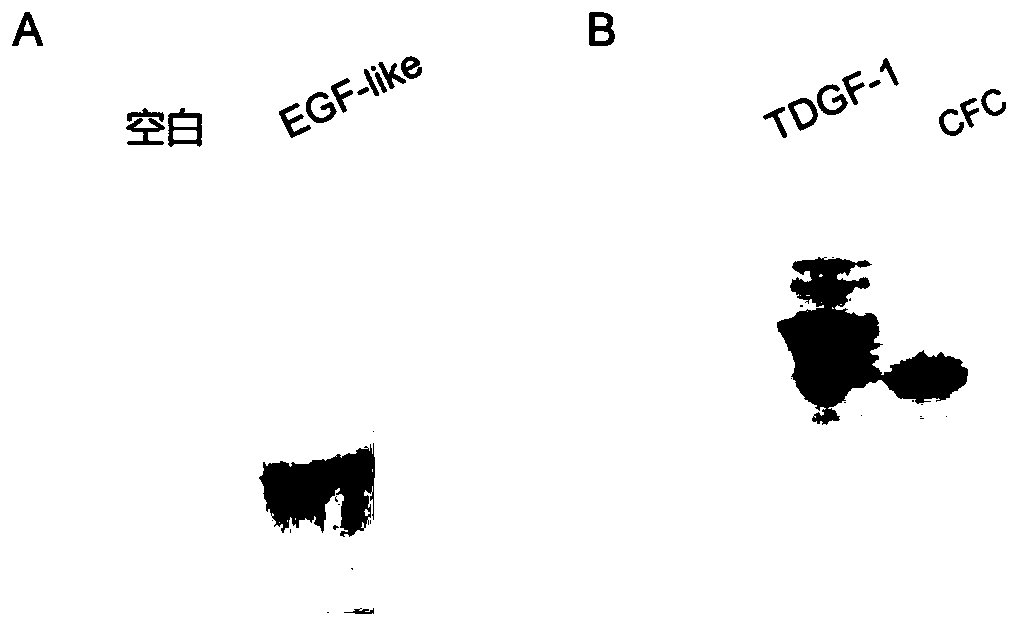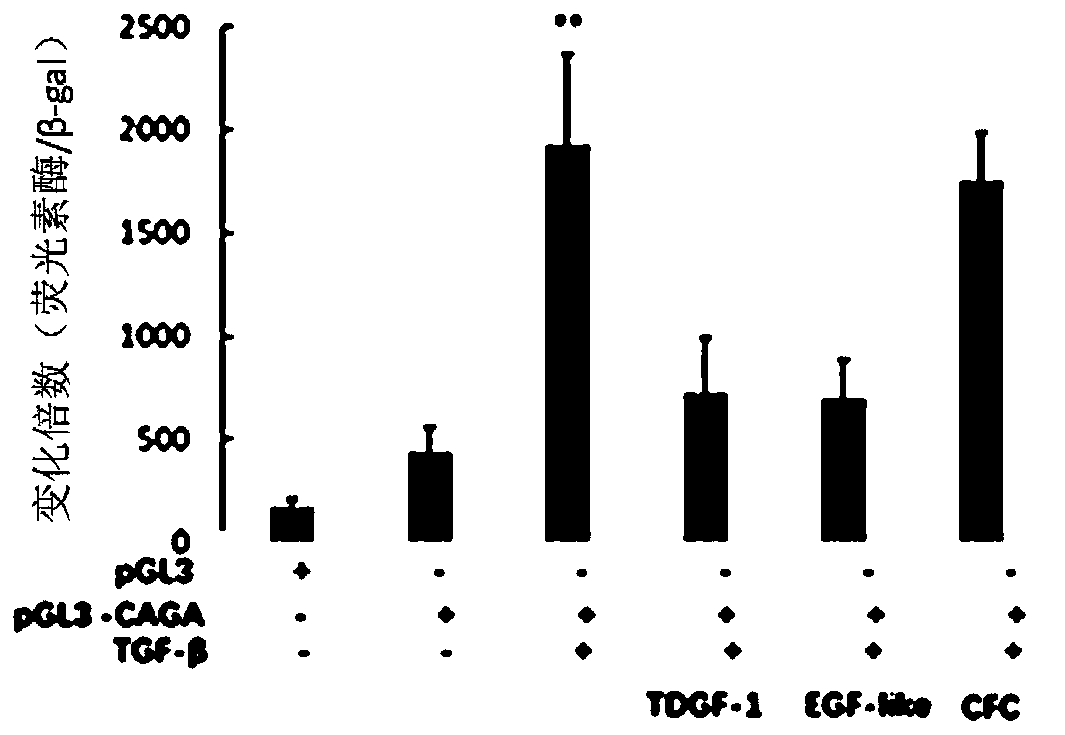Application of TDGF-1 (teratocarcinoma-derived growth factor-1) truncated micro-molecule polypeptide in anti-hepatic fibrosis
A TDGF-1, anti-hepatic fibrosis technology, applied in the field of biomedicine, can solve problems such as functional limitations
- Summary
- Abstract
- Description
- Claims
- Application Information
AI Technical Summary
Problems solved by technology
Method used
Image
Examples
Embodiment 1
[0063] Embodiment 1 TDGF-1 protein and its truncated polypeptide synthesis
[0064]The full-length protein of human TDGF-1 (sequence shown in SEQ ID NO.3) was obtained by prokaryotic expression in Escherichia coli, and the TDGF-1 truncated polypeptide was synthesized in cooperation with Jikai Gene (Shanghai): EGF- Like domain short peptide (sequence shown in SEQ ID NO.1) and CFC domain short peptide (sequence shown in SEQ ID NO.2).
[0065] SEQ ID NO. 1: PPMGIQHSKELNRTCCLNGGTCML;
[0066] SEQ ID NO. 2: PSFYGRNCEHDVRKENCGSVPHDTWLPKKCSLCK.
[0067] SEQ ID NO.3:
[0068] MDCRKMARFSYSVIWIMAISKVFELGLVAGLGHQEFARPSRGYLAFRDDSIWPQEEPAIRPRSSQRVPPMGIQHSKELNRTCCLNGGTCMLGSFCACPPSFYGRNCEHDVRKENCGSVPHDTWLPKKCSLCKCWHGQLRCFPQAFLPGCDGLVMDEHLVASRTPELPPSARTTTFMLVGICLSIQSYY
[0069] Protein and peptide electrophoresis figure 1 shown.
Embodiment 2
[0070] Example 2 In vitro cell experiments to study the function of TDGF-1 protein and its truncated polypeptide
[0071] 1. Immunofluorescence experiment
[0072] Method: Divide 1×10 5 LX2 (human hepatic stellate cell line) cells were planted in a 6-well plate at 37°C, 5% CO 2 Cultivate in a sterile environment for 24 hours until completely adhered to the wall, remove the culture supernatant, replace with DMEM medium containing 3% fetal bovine serum to continue the culture, add PBS and 50ng Cripto-1 whole protein to different cell supernatants (R&D Company), 50ng EGF-like domain short peptide, 50ng CFC domain short peptide, incubated for 48 hours. Remove the supernatant, wash the cells three times with PBS, add pre-cooled 4% paraformaldehyde to each well to fix for 5 minutes, wash with PBS three times, add PBS containing 0.5% TritonX-100, 1ml per well, incubate at room temperature for 10 minutes; Aspirate 0.5% TritonX-100 PBS, add 1ml 5% BSA (diluted in PBS) to each well, ...
Embodiment 3
[0085] Example 3 In vivo experiments to study the function of TDGF-1 protein and its truncated polypeptide
[0086] 1. Construction of mouse model of liver fibrosis
[0087] Healthy C57 male mice, weighing between 18-22g, were adaptively fed for 3-5 days. The mouse model of hepatic fibrosis was established by subcutaneous injection of carbon tetrachloride or intraperitoneal injection (15 μl carbon tetrachloride / 85 μl olive oil), injected twice a week, with a total volume of 100 μl for each injection, and sacrificed after continuous injection for 8 weeks From mice, the liver and peripheral blood were collected for the analysis of liver fibrosis evaluation indicators (source of model establishment scheme: J Hepatol.2017Oct; 67(4):770-779).
[0088] 2. Detection
[0089] From the 4th week of liver fibrosis mouse modeling, different time points (4-10 weeks) were used to intervene with small molecules of TDGF-1 truncated polypeptide to mice with liver fibrosis, intraperitoneally ...
PUM
 Login to View More
Login to View More Abstract
Description
Claims
Application Information
 Login to View More
Login to View More - R&D
- Intellectual Property
- Life Sciences
- Materials
- Tech Scout
- Unparalleled Data Quality
- Higher Quality Content
- 60% Fewer Hallucinations
Browse by: Latest US Patents, China's latest patents, Technical Efficacy Thesaurus, Application Domain, Technology Topic, Popular Technical Reports.
© 2025 PatSnap. All rights reserved.Legal|Privacy policy|Modern Slavery Act Transparency Statement|Sitemap|About US| Contact US: help@patsnap.com



